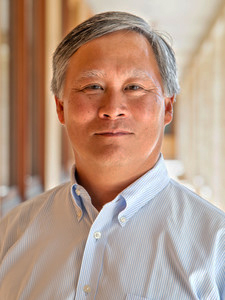
Courtesy of Yale News
Under the leadership of former Senior Director of the Yale Investments Office Dean Takahashi ’80 SOM ’83, the Yale Carbon Containment Lab has been examining how to research ways to cut and store carbon emissions.
As senior director, Takahashi grew Yale’s endowment by nearly $30 billion and guided investments in timber and renewable wind energy. Now, as the founder and executive director of the CC Lab, Takahashi and his team will design, test and develop methods of reducing and containing carbon in the atmosphere — a key contributor to climate change. The lab’s website lists several potential research projects, including a push to dampen wildfire rates in the American West and to protect Indonesian peatlands. In an email to the News, Takahashi said he is also researching ways to harness trees and kelp for storing carbon.
“At the CC Lab, we are working on designing, testing and developing carbon containment systems with three component phases: acquisition, treatment, and storage,” he wrote. “We combine them to create safe, scalable, low cost, resource efficient and verifiable reductions in atmospheric carbon.”
This Thursday, Takahashi will speak to select students in the Program of Ethics, Politics and Economics about his new lab.
“We are interested in ways to cut carbon emissions, and want to know how he aims to do it,” EP&E Director Frances Rosenbluth said.
Despite recent calls among student activists to divest Yale’s endowment from fossil fuel companies, Chief Investment Officer David Swensen wrote in a statement last week that the “grave threat” of climate change is best addressed through “research, scholarship and education.”
“This is a formidable task that requires swift and dramatic action on a global scale,” he wrote. “The solution involves a combination of government policy, technological innovation and changes in individual behavior.”
Swensen serves on the Board of Advisors for the CC Lab. Takahashi’s spot as senior director in the YIO has not been filled, according to its website.
Takahashi explained that he made the career shift to devote his efforts solely to fighting climate change.
“Carbon containment innovation … takes tremendous time and effort,” Takahashi wrote to the News. “On the other hand, the Investments Office needs to focus on generating Endowment returns to support the University’s programs and financial aid and to maintain inflation-adjusted purchasing power.”
Takahashi’s lab has set an ambitious goal of achieving 10 million tons of emissions offsets by 2030.
To reach these ends, he is employing cutting-edge technologies and novel approaches. The lab’s website states it has received five years of financial support from Yale supporters.
“He’s basically thinking outside the box,” said Mark Ashton, professor at the Yale School of Forestry and Environmental Science and faculty adviser to the lab.
For example, Takahashi told the News that his team is exploring methods of harvesting excess wood from forests in areas with a high risk of wildfire. The lab has also considered the efficacy of removing and burying small trees in gravel pits to prevent forest fire, as well as sequestering vegetation underground or underwater to store carbon.
Austin Strayhorn ‘19, a carbon offsets analyst, told the News in an email that the CC Lab’s carbon dioxide removal methods will not directly contribute to reducing Yale’s emissions. Instead, he said, “Our goal is for the low-cost, negative emission technologies we develop to be verified and deployed around the world.”
The CC Lab’s website states that it “does not strive” to monetize its carbon containment methods or its intellectual property.
According to F&ES Teresa and H. John Heinz III Professor in the Practice of Chemistry for the Environment Paul Anastas, Takahashi’s emphasis on immediate and novel action to address climate change drew him to the lab.
He recalled his first conversation with Takahashi sparking his interest in the lab. Takahashi outlined a focus on “consequential positive action rather than simply measuring, monitoring and viewing or assessing the problem,” Anastas said. According to the CC Lab’s website, Anastas serves among the dozen faculty collaborators and advisers for the project.
Takahashi’s experience with climate change research also goes beyond his tenure at the YIO. Takahashi told the News that he performs his own hands-on experiments in his garage, from designing and testing a gas chamber made from plastic garbage cans to measure methane in peat bogs to baking wood pieces in clay and sandy soils in hopes of avoiding uncontrollable fires.
Takahashi’s interest in both finance and environmental science also reflects the lab’s multidisciplinary approach to combating the climate crisis. The lab retains experts ranging from green chemists to environmental engineers and will eventually consist of 10 to 15 “highly motivated problem solvers with a variety of technical and operating backgrounds,” according to its website.
“You simply cannot address the climate crisis in ways that are just going to be from a scientific and technological viewpoint, you can’t do it from just a regulation and a policy point of view, you can’t do it from just an economic and investment point of view,” Anastas said. “All of them have to be working together, and that’s the wonderful thing about the Carbon Containment Lab.”
The CC Lab officially launched this January.
Rose Horowitch | rose.horowitch@yale.edu
Matt Kristoffersen | matthew.kristoffersen@yale.edu







